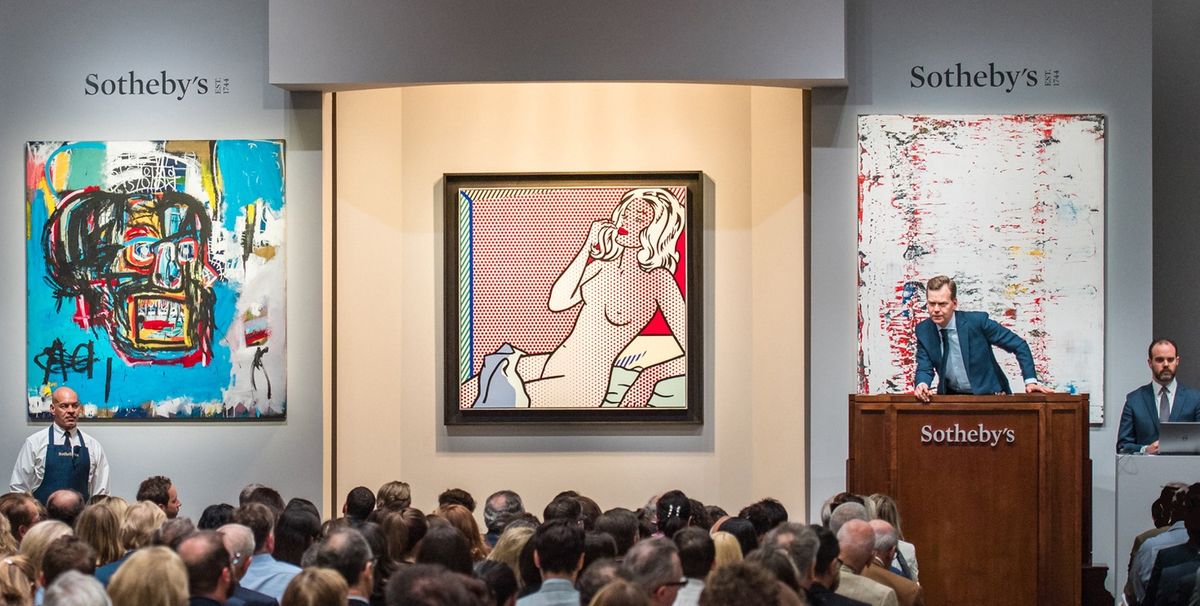Sotheby’s made a clear commitment to the increased use of technology and digital marketing in its second quarter results call this morning, but such innovations come at a cost. Tad Smith, the company’s chief executive, said that Sotheby’s has “been adding staff who are skilled specialists, experts in needed technologies, strong salespeople, and excellent digital marketers”, perhaps reflected in a $12m rise in salaries from the same period last year. But, he added the company will “pause and re-examine our cost structure in areas that are not growing or where automation, data, or standardisation of processes will yield significant savings.” He added: “We believe that there are numerous opportunities for our company to improve efficiency and productivity, and we will address this opportunity by the end of this year.” Sotheby’s declined to elaborate on whether such efficiencies would have staffing implications.
Although 14% down from the second quarter (Q2) last year, Smith said the company’s net income of $76.9m for the period is “solid” and he expects growth as the market recovers. This fall is attributed to higher indirect expenses, notably salaries, which rose $12m from last year and concerted investment in digital innovations. Such costs, a Sotheby’s statement says, offset a $7.7m rise in commissions and fees. Diluted earnings per share price has held more steady, decreasing by 6% from $1.52 to $1.43 due to fewer common stock shares following Sotheby’s repurchase programme.
The 5% rise in total revenue for Q2 2017 (from $298.7m to $314.9m) is, Smith said, “mainly due to a rise in inventory sales” (up to $19.9m from $5.2m) but also an “improvement in the performance of our guarantees.” He added comparisons with last year were tough “because of an outstanding spring sale series in Asia and the record jewellery sales in Geneva last year”.
The half-year picture is healthier, with net income at $65.6m, a rise of $2.5m (4%) on 2016. Revenues for the first half of this year are up 24% from $405.2m to $502.4m, largely due to an increase in inventory sales, which in total grew to a substantial $91.3m from $12m in the first half of 2016. Mike Goss, chief financial officer, said that Sotheby’s is continuing efforts to “convert our inventory to cash”. The quarter-end inventory balance now stands at $131m (at the end of 2015, the “legacy inventory” was $215m). But, Goss said, “that balance still includes the entire amount of the $68 million Pink Diamond, which was sold at auction during this quarter” but will not be recognised as a sale until Sotheby’s collect the money from the buyer, the Hong Kong-based jewellery retailer Chow Tai Fook. Goss said the auction house anticipates this to happen within the year.
As for future strategy, Smith said Sotheby’s plans to grow its jewellery, wine and art advisory businesses (notably, private sales rose by 34% in the first half of 2017 to $333.8m). The number of high-priced works sold has also risen (up by 5% for those over $1m, with average hammer up 17%). But, as vendor-friendly deals are often cut to consign star lots, commission margins are lower for these high value pieces, flat at 16.3% for Q2 2017. The market, Smith said, “is healthy and efficient, but neither frothy nor depressed” and while “the uncertainty in Washington DC is troubling”, that does not appear to have dampened a rebound in American buying, which has shot up by 26%, toppling Asian bidders as the largest buyers by volume.


